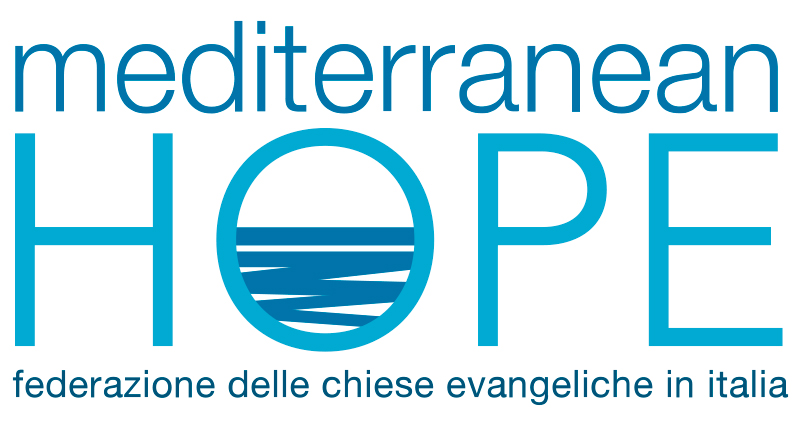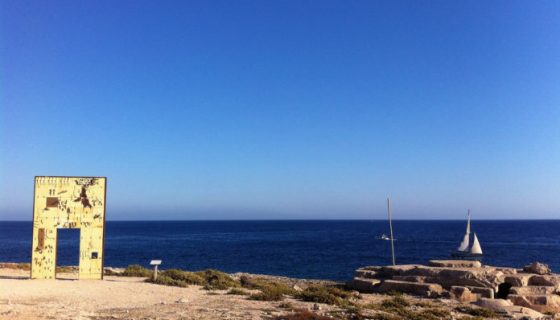- Mediterranean Hope - Federazione delle chiese evangeliche in Italia
- mh@fcei.it
Economic migrants or refugees? If the poor of the world become second-class migrants
By Redattore Sociale ROME – To select migrants directly in their countries of origin or transit, distinguishing clearly between refugees and economic migrants, including those who have the right to come to Europe and those who do not.
The issue of immigration is at the centre of the European Council which starts today in Brussels, and one of the requests to be discussed is that of stricter rules on the identification of those arriving in Europe, to allow only some the right to stay. The Prime Minister, Matteo Renzi, made it clear this morning to the Presidents of the Regions: “Asylum seekers will be accepted, economic migrants will be repatriated.” But is it possible to make such a clear-cut distinction between these two categories? And what scenarios does this additional intangible “frontier” open to the possibility of building a better life? THE FOUR FORMS OF PROTECTION In Italy, there are different forms of international protection: an asylum seeker is someone who is outside the borders of their country and applies to obtain the status of political refugee. According to the requirements of the Geneva Convention of 1951, a refugee is “a person who owing to a well-founded fear of being persecuted for reasons of race, religion, nationality, membership of a particular social group or political opinion, is outside the country of his nationality and is unable or, owing to such fear, is unwilling to avail himself of the protection of that country”. There is the beneficiary of subsidiary protection then, namely, people who do not qualify as refugees, but who nevertheless require a form of international protection because they have fled their country because their lives have been seriously threatened by armed conflicts, generalised violence or massive violation of human rights. While the beneficiary of humanitarian protection is a person who, although not qualifying as a refugee or beneficiary of subsidiary protection, is considered at risk for serious humanitarian reasons. REFUGEES, A MINORITY OF THOSE ACCEPTED Looking at the data on asylum seekers in the last two years, the last form of protection is the most common. As explained by the Minister of the Interior Angelino Alfano, 59 thousand migrants have entered Italy by sea since the beginning of the year. In 25% of cases, they are Eritreans, followed by Nigerians (10%), Somalis (9%) and Syrians (7%). Since January, 22 thousand applications for asylum were submitted, but the status of refugee was granted to 6% of applicants, subsidiary protection was granted to 18%, while humanitarian permits were given to 25% of migrants who landed on our shores. A situation more or less similar to that of last year: where 64,000 applications were submitted compared to 170,000 arrivals: in 10% of cases, the status of refugee was recognised, in 23%, subsidiary protection and in 28%, humanitarian protection. Among the countries with the highest number of people requesting international protection, Nigeria is first (10,135 or 16%), followed by Mali (9,790 or 15%), Gambia (8,575 or 13%), Pakistan (7,191 or 11%) and Senegal (4,700 or 7%). Therefore, most people accepted on Italian territory are not refugees in the strict sense. In addition to those fleeing from the nightmare of Boko Haram, protection is also given to those who can prove that they would face serious harm if they returned to their country, even though they are not persecuted politically. THE DIFFICULT DISTINCTION… “Out of all the international models, our constitution has one of the broadest visions of the right to asylum,” explains Roberto Zaccaria, constitutional lawyer and President of CIR. “According to our system, which is one of the most advanced, anyone who does not enjoy the fundamental rights in their country that we assure in ours has the right to protection.” Therefore, according to our legislation, it is very difficult to make a clear distinction between who has the right to stay and who does not, which is based only on the political upheaval going on in the country of origin. This strict selection of beneficiaries also raises some important questions of a political and moral nature: Don’t people who flee from a life of hardship, rather than a war, also have the right to a better life? And, also, can people really say they are safe in some African countries, not officially at war but dominated by situations of instability. This clampdown on the requests for protection could become another intangible barrier that stands between the refugees and the hope of a new life. …BETWEEN PERSECUTION AND MISERY This kind of “hierarchy of desperation” is primarily rejected by associations that have always been working alongside migrants. According to Mario Marazziti, MP for the Per l’Italia political party and member of the Community of Sant’Egidio which recently filed a bill to regulate asylum in Italy: “We need to rethink the categories. There are numerous mixed solutions relating to the issue of protection,” he said. “For example, people are also fleeing from desertification. Although technically at that moment there is no religious or military persecution underway, it is hard to say that the people fleeing from those areas are not refugees. We are now facing a strong populism that focuses on national self-interest or only on the economic factor,” he adds. “However, we must not forget that some countries are living in a state of insecurity linked to the politics of the sale of arms and energy exploitation, where there is a responsibility also of European countries.” “The boundary between persecution and the scarce possibility to live is very unclear,” concludes Amartya Sen, who has shown us that famine and dictatorships go hand in hand. FIRST-CLASS AND SECOND-CLASS MIGRANTS Caritas also follows this line of thinking. “The distinction between refugee and migrant is of no interest to us, we are interested in people,” says the Immigration Officer, Oliviero Forti. “The urgency to concretely solve problems relating to conflicts and persecutions, with immediate assistance such as resettlement, should not overshadow the plight of people fleeing untenable living conditions such as hunger, social and environmental degradation. You cannot classify migrants as first or second-class migrants. Migration stems from the desire to change one’s situation for the better,” he adds. “It is no coincidence that Syrians and Eritreans do not seek asylum in our country, but only the people coming from sub-Saharan Africa stop here: for these migrants the life they find in our country is infinitely better than the one in their country. We cannot close our eyes to the conditions of misery that exist in the world and that in most cases are the result of globalisation and exploitation carried out for years in northern countries of the world. We must look at the individuals not at the status.” Source: http://www.redattoresociale.it/Notiziario/Articolo/486523/Economici-o-rifugiati-Se-i-poveri-del-mondo-diventano-migranti-di-serie-B





